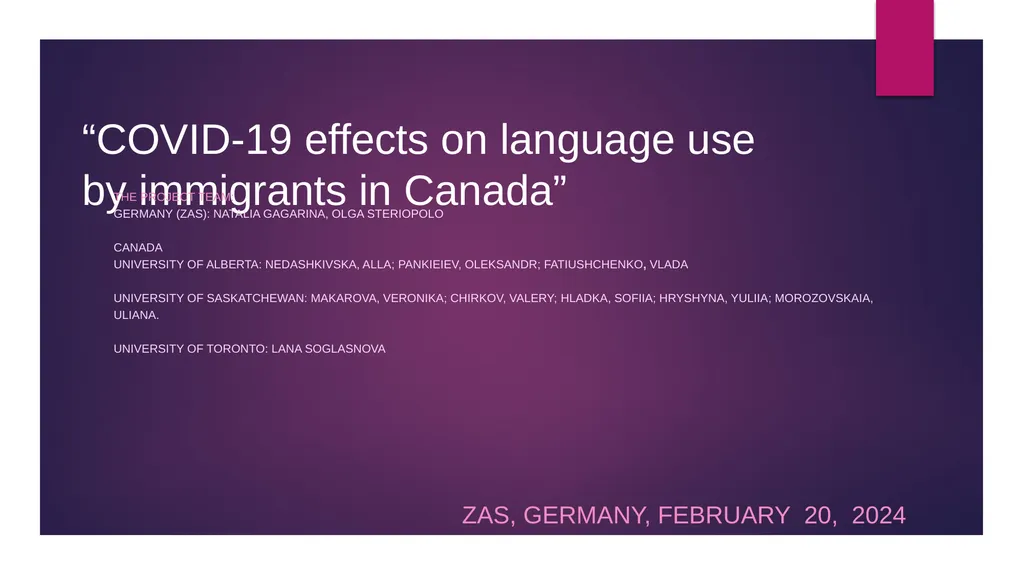
“COVID-19 effects on language use by immigrants in
Author: yoshiko-marsland | Published: 2025-07-16
Description: COVID-19 effects on language use by immigrants in Canada ZAS, Germany, February 20, 2024 The project team: Germany (ZAS): Natalia Gagarina, Olga Steriopolo Canada University of Alberta: Nedashkivska, Alla; Pankieiev, Oleksandr;
Download Presentation
Download the PPT/PDF: Download
Transcript:
Loading transcript�